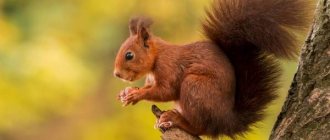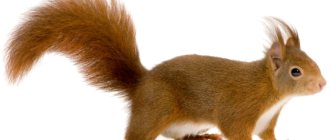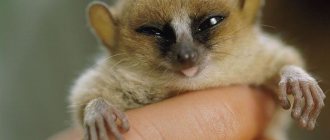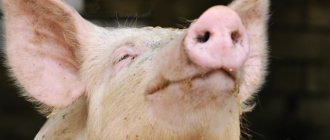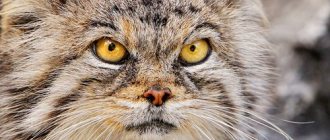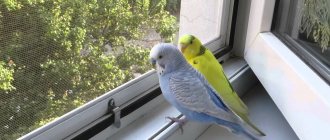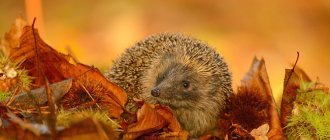The Syrian hamster (Cricetus Auratus) is a subspecies of domestic rodent. This species began to be bred in the thirties of the twentieth century. The species was first discovered in Syria, from where it was transported to Europe. The name of the breed comes from the place where it was found. The breed was distinguished by increased fertility, and the breeders quickly managed to domesticate the animal. Over time, pets were divided into several species, each with its own distinct unique features (color, coat length). It is these qualities that we have come to mean by the phrase “colors of Syrian hamsters.”
Later, 2 English clubs, BHA and NHC, developed a classification of hamsters based on genes, and not just appearance. Rodents were gaining more and more popularity in different parts of the world, and countries began to give new names to flowers. They appeared in the CIS countries relatively recently. Since we did not have enough correct information on caring for these animals, the conditions for keeping the babies were often terrible. Naturally, there could be no talk of any accepted classification of colors. Everyone called them whatever he liked, based on his own preferences and associations.
However, this knowledge should not be neglected. To avoid confusion, it is better to study the table of species and clearly determine which of them your Syrian hamster belongs to. It is important to correctly fill out the breed and color column in the veterinary passport, especially if you plan to cross the border with the rodent.
Care and maintenance
Despite the color difference, black hamsters do not require any special maintenance or care.
In this case, the main attention should be paid to the breed
For example, Djungarian animals do not require a very large cage due to their small size. A standard or regular aquarium is quite suitable for them. However, when choosing the second option, it is necessary to take into account that the walls of the aquarium should be no more than 40 centimeters in height with a length of 100 centimeters. If this condition is not met, there is a risk of disruption of air circulation, and humidity and stuffiness will not benefit the kids. In addition, fresh food will spoil much faster, which can threaten the animals with poisoning.
If the owner of a dzhungarik is choosing a cage for a future pet, he must take into account that the animal is very small in size and can easily fit between the bars that are too wide. The distance between them should be minimal.
For a Syrian hamster, a cage of more than medium size is suitable. It itself can be quite large, and space is necessary for animals of this species.
As for the location, in this case you will also need to comply with some conditions. Animals will be uncomfortable near radiators and heaters, near air conditioners, and on the windowsill. Direct sunlight can cause heatstroke in pets. They are also very sensitive to drafts and should be avoided as much as possible.
The recommended temperature is at least +20 degrees. If there are other pets in the house, you need to ensure the peace and safety of the hamsters as much as possible. In addition, it should be borne in mind that these rodents are nocturnal animals, and in the bedroom they can interfere with their games and movements in the dark.
Syrian Hamster Health
Common health problems in the king hamster:
- Obesity
- Eye diseases
- Gastrointestinal disorders
- Skin diseases
- Injuries
If you notice external signs of illness (inflammation, scratching, diarrhea) or your pet’s behavior has changed (became lethargic, makes strange sounds, does not eat), immediately contact a veterinarian (a specialist in rodents is called a ratologist). Under no circumstances should you treat it yourself, otherwise there may be no one to care for you.
To avoid injury, keep an eye on the animal while walking around your apartment or house. Hamsters live on plains, so they don’t understand what height is. Before you know it, your pet will fall off the back of the sofa and break its leg.
We wrote in detail about the diseases of Syrian hamsters and their care in a separate article.
Don't panic! The doctor knows what to do.
Content Features
Hamsters can be kept in aquariums or cages. The second option is more convenient and popular
It is important for the rodent to provide space and good bedding, since the natural need for the animal is to dig holes. The substrate in the animal’s house can be paper, special filler, or wood shavings.
The main thing is that the raw material is light and absorbs liquid well.
The animals will also need material to build a nest. Cuts of paper will do the job well.
https://kotiko.ru/homjaki/raznovidnosti-homjakov/okrasy-sirijskih-homjakov-chernyj-belyj-zolotistyj-i-drugie-foto.html https://homjakam.ru/vidy/okrasy-sirijskih-homyakov https: //vplate.ru/homyak/sirijskiy/
Campbell
Like the previous species, it belongs to the family of dwarf rodents. An inexperienced rodent lover can easily confuse them with the Djungarians, but the Campbell's are distinctive in character and appearance.
Campbell cats are characterized by small ears and no fur on their soles. Regarding behavior, hamsters of this species are difficult to train. In addition, they love to bite. When keeping several individuals, it is highly not recommended to leave them in a cage together: this can cause damage or even death.
Keeping rodents of this species requires a spacious terrarium: they are extremely active, so they will need a lot of space to run.
lovelyhamster.ru
Among which species are black hamsters most common?
So, if you are eager to have a tiny black fluffy miracle, then you are in luck - a similar coat color is found in the most popular and widespread breeds, the Syrian and Djungarian hamster. Therefore, acquiring them will most likely not be difficult. Although it should be noted that this color is quite rare.
The Syrian hamster is a medium-sized rodent, the Djungarian hamster is a dwarf one, which means they will need housing of different sizes. There will also be a difference in the amount of food eaten daily.
We invite you to get to know the black fluffies better.
Syrian hamster black
The Syrian, or Central Asian, rodent has the following parameters:
- weight - 100–130 g;
- body length - up to 14 cm;
- body - stocky, thick;
- muzzle - short, with large cheek pouches;
- ears are small, round, covered with hair;
- eyes - expressive, black, bead-like;
- tail - 1.5 cm long, almost invisible;
- limbs - stocky with wide paws, 4 toes on the front paws, 5 on the hind paws;
- Colors vary, the most common being golden.
Djungarian hamster black
Representatives of this breed have the following characteristics:
- weight - 35–65 g;
- body length - up to 10 cm;
- body type - round;
- ears - small;
- eyes - large, black;
- tail - short, almost invisible;
- limbs - covered with hair;
- color - different: white, black, brown, gray, with a dark vertical stripe on the back and a diamond on the muzzle;
- The coat is medium length, smooth, soft.
Origin of the species and description
Photo: Syrian hamster
The Syrian hamster is a chordate animal. They are classified into the class of mammals, the order Rodents, the family Hamsters, the genus Medium hamsters, and the species Syrian hamsters. Initially, the name golden hamster was assigned to them thanks to zoologist Georg Robert Waterhouse. On the recommendation of Charles Darwin, he compiled a list of animals that arrived from the expedition on the Beagle. Among the diversity of representatives of the animal world, there was the only representative of this breed.
Video: Syrian hamster
This species of animal was first described by the English scientist, zoologist and researcher George Robert Waterhouse in 1839. The scientist mistakenly considered it an extinct species. This assumption was refuted in 1930, when another scientist Israel Aharoni, during his expedition, discovered a Syrian hamster - it was a pregnant female. The scientist transported this hamster to the University of Judea, where the female safely gave birth to 11 small hamsters. Subsequently, of the entire brood, only three males and the female who gave birth to them remained alive.
Scientists tried in vain to find other individuals of this species in natural conditions. However, they never managed to do this. Then Akhoroni came up with the idea of crossing a female Syrian hamster with a male of a related species. This couple became the progenitors of a new species. Around 1939-40, the resulting offspring were transported to the United States of America. After another 1.5-2 years, scientists finally came to the conclusion that the Central Asian hamsters had become extinct, and there were no more representatives of this species in natural conditions.
In the process of studying Syrian hamsters, it was found that they have a dental structure similar to that of humans, and therefore they were used in laboratory conditions to study dental diseases. To date, scientists have not been able to answer the question of what caused the extermination of this species of animals.
What to feed
Dwarfs have a high metabolism (metabolism), so they need more calories per gram of weight than their full-sized counterparts.
It is believed that the daily food intake is a tablespoon of grain feed. In any case, it is better to focus on the spot: each organism is an individual, the main thing is not to overfeed and avoid obesity. They feed twice a day.
Insects and twisted boiled meat (beef or chicken) are given as a delicacy.
The presence of animal protein in the diet of animals during pregnancy and feeding of offspring is especially important.
Hamsters' teeth are constantly growing, so it is vital for rodents to sharpen them. To prevent the baby from gnawing everything, a chalk stone, twigs, or even dog treats are placed in the cage. Neither has a negative effect on the dental or digestive system.
Caring for a Syrian hamster at home
The Syrian hamster will become an unpretentious pet at home. All he needs is feeding and care. Caring for a Syrian hamster is quite simple. It is enough to clean the cage 2-3 times a week. It is necessary to put a thick layer of sawdust on the bottom, in which it will clean the wool. Modern cages are already equipped with a feeder, wheels and a drinking bowl. The water is changed once a day. Drinking is an important part of keeping a rodent. Sometimes the animal needs to be let out to run around the apartment, but for this the hamster must be accustomed to being handled and not be afraid of people. If you follow all the rules, caring for and maintaining a Syrian hamster will not bring much trouble.
Before buying an animal at a pet store, you can purchase a book that will contain all the information about Syrian hamsters.
Habitat and distinctive features
Under natural conditions, fellow Angoras live in the mountains of the Caucasus and Central Asia.
The Angora hamster is not a separate breed. This is the same Syrian hamster, only with much longer hair. This is the result of mutations in genes. Another difference lies in the color palette.
Individuals with long hair and different shades have always appeared in families of Syrian hamsters. But their characteristics prevented them from surviving in natural conditions. But in captivity, with proper care, these babies adapt perfectly to living conditions. Therefore, breeders began to specifically select unusual representatives of the Syrians and fix the mutated characteristics.
large cheeks are whiter than other hamsters
Where does the Syrian hamster live in the wild?
As for the distribution area of animals, it is quite extensive. Syrian hamsters are common on the European continent, Africa, Central to Southeast Asia, and North and South America.
There is no preferred habitat for these rodents. They feel equally comfortable in semi-deserts and deserts, in forest-steppe areas and steppes, in mountains at an altitude of up to 3000 m above the sea.
But most often the animal can be found in the wild in cultivated areas, orchards, parks and fields in countries such as the Balkans, Turkey, and Iran.
These rodents are completely unpretentious, so they can actually live in any area where there is suitable food.
Basic colors
The main colors of Syrian hamsters are presented:
Golden
This is the true color of hamsters, so it is the most common. It is similar to the color of mahogany. Therefore, it is also called the peach-colored Syrian hamster. In this case, the roots of the hairs are colored dark gray, and the tips are colored black. The belly is much lighter, colored ivory. The golden hamster has the characteristic features of gray ears and black eyes.
Black
This shade appeared at the turn of 1985-86. in France due to mutation. Due to its large size, in the USA this type of hamster is called the “Black Bear”.
Characteristic features are “coal”, i.e. the hairs should be dyed jet black along their entire length from roots to tips. According to the exhibition rules, white tips of the paws and a white chin are allowed. There is a black Syrian hamster with a white belly, but such colors are considered a waste.
White
White color is often confused with “ivory” even by experienced breeders, since they are very similar. The white Syrian hamster has a white coat contrasted with gray ears and red eyes. Ivory specimens are found with red or black eyes. You can distinguish between these two colors only by placing the animals side by side.
Grey
The fur of the animals is silvery-white in light tones. At the roots it is dark gray-blue in color, the tips are black (except for the abdominal area). The gray Syrian hamster has distinctive features: dark gray, close to black, ears, a gray spot on the chest, stripes on the cheeks with black tips.
Appearance and features
Photo: Syrian hamster boy
Syrian or golden hamsters were bred in laboratory conditions from wild hamsters brought from Syria by zoologists in the last century. The body length of an adult is approximately 13-15 centimeters. Average body weight is 200-300 grams. This species is characterized by sexual dimorphism. Female individuals have a larger and stockier body. At the same time, the body length of females is slightly less than that of males. Another distinctive feature is the shape of the back. In females it is straight, in males it has a pointed shape. Individuals can also be recognized by the number of nipples. Females have four of them, males have only two.
Animals have a specific structure of their limbs. They have 4 toes on their forelimbs and five on their hind limbs. Most individuals of this species are golden in color, but individuals of other colors may occur.
What colors of Syrian hamsters can be found:
- copper;
- chocolate colors;
- sable;
- beige;
- honey;
- dark chocolate color.
The color may be uniform or have spots of a different color. The body of Central Asian hamsters is covered with thick and soft hair. Golden hamsters come in long-haired and short-haired varieties. The hamster's muzzle has a round, slightly elongated shape. There are small, rounded ears on the side of the head. The hamster's eyes are large, round, black, shiny. The nasal part of the animals is framed by whiskers. Hamsters have a small, short tail that is almost invisible in their thick fur.
Features of character and lifestyle
Photo: Syrian hamster girl
The golden or Syrian hamster is considered a nocturnal animal. He sleeps almost all day, waking up only to satisfy his hunger. But at night he wakes up and becomes very energetic. In natural conditions, hamsters constantly dig the ground. They are able to dig an almost unlimited number of earthen passages and holes. Hamsters tend to lead an isolated lifestyle. Each individual needs its own home. This should be taken into account when keeping animals at home. Rodents tend to store food. They put food in their cheek, then take it out and eat it.
With the onset of darkness, incredible animal activity is observed. In natural conditions, this helped them escape from numerous enemies. At night, the animals are engaged in arranging their homes, preparing food supplies and consuming them, and can also simply frolic and play. In natural conditions, hamsters tended to lead an isolated, rather solitary lifestyle. Juveniles could sometimes form small groups. Having reached sexual maturity, hamsters begin to fight for territory, food supply, etc. Often such disputes end in death for weaker individuals.
To keep it at home, a small rodent will need a spacious cage with an equipped sleeping area and a house. It is desirable that the cages have a carousel and a ladder in several tiers. In conditions of limited space, this is an indispensable attribute for the animal’s comfortable living.
Description and lifestyle
The Syrian hamster is one of the largest species of rodents in the hamster family. The size of its body can reach from 13 to 19 centimeters, and the larger ones in this species are always females. The Syrian is easy to recognize by his stocky body, short legs, medium-sized rounded ears, and a round small muzzle. Many people mistakenly believe that this species does not have a tail, but if desired, it can be found under the thick fur. You can sometimes notice aggression in the Syrian hamster.
The peculiarity of the Syrian hamster is that its front legs have four toes, and its back legs have five. In the wild, the rodent is accustomed to living in shallow burrows and staying awake at night, so hamsters at home also adhere to a similar lifestyle.
The Syrian hamster has been given the title of being a good-natured animal and a favorite. People value this rodent for its friendliness, amazing habits and intelligence. The Syrian species is the only one that can be trained to a nickname. Then spending time with the affectionate animal becomes very interesting and fun.
Types of hamsters by their coat type
Most often you will come across two types of rodents: short-haired and long-haired. Often they like to call the latter “Angora”, which indicates their external resemblance to Angora cats. They say that the long-haired hamster was bred purely artificially and is more susceptible to disease. This is wrong. Among wild counterparts, individuals with a similar type of coat were rarely encountered, but still were found. The breeders only noticed this feature and directed its development in the right direction. The fur coat of such a baby is very dense and thick, reaching several centimeters in length. Of course, she requires more care than usual. It is necessary to purchase a special comb that is not harmful to the baby, and regularly ensure that tangles do not appear on the fur.
In addition to this classification, there are several more divisions based on the type of wool texture. They are less popular, some are not found in our region, and some are rare throughout the world. Hairless hamsters are very similar to “naked” rats, only without a long tail. This is a purely ornamental breed, bred by man as an alternative for allergy sufferers. There is also a “Rex” type with a stiffer, shorter coat. In terms of tactile sensations, such a fur coat resembles the soft quills of a hedgehog. The last type, atlas, can be a complement to all of the above. It indicates the characteristic shine of the fur.
Any of these types can have shades, which are described below.
| Shorthair |
| Longhair |
| Rex |
| Atlas |
Fixed pattern guinea pig colors
Rodents with fixed colors have a clear pattern on their body, fixed by the breed standard.
Himalayan (ordinary or Russian)
With this color, the animals resemble Siamese cats. Their body is white, cream or light beige, and their paws and muzzle are painted in a dark tone (black, gray, chocolate).
Himalayan guinea pig
Foxes and Tans
Rodents have dark fur with white or red tan markings on the belly, chest area and around the eyes. A chocolate or black guinea pig with red tan is called a tan. Foxes are rodents with white tan markings that contrast sharply with their dark fur color.
Fox color
Otter (otter)
This color is represented by a chocolate gray color. The body of the animal is painted in a smoky gray color, coffee or chocolate shade.
Otter color
Brindle (variegated)
A beautiful and unusual color in black and red, characteristic of long-haired guinea pigs, in which their body is colored with these colors in equal proportions.
Brindle color
Although the colors of these cute and cute rodents delight with their diversity and combination of different shades, breeders do not stop there. Therefore, we can expect that in the near future there will be animals with new unusual colors and unique patterns on their soft fluffy coat.
Additional shades
The colors of Syrian hamsters are not limited to those listed above. Let's look at less common, but no less popular colors.
Beige
The color of the beige rodent was obtained by crossing gray and red animals. The wool may contain light orange notes. The abdomen is ivory-colored and the base of the pile is grayish. Distinguished by dark ears, a brown spot on the chest and stripes on the cheeks. The fur shimmers in the sun with warm shades: pink, orange, peach.
Cinnamon
The red-haired pet has a bright copper-orange coat. Sometimes the pile is brick-colored. The animal is distinguished by a white or cream crescent on its chest, as well as bluish stripes on its cheeks.
Brown
The animal is light red or sandy in color. Sometimes golden and brick shades appear on the fur. The tummy is milky, less often sugar. There are brown stripes on the cheeks.
Copper
The Syrian hamster is copper-colored with grayish ears. Sometimes there are representatives with white paws and a light chin.
Cream
The Syrian golden hamster is similar to its cream-colored counterpart. This variety is also popular. The coat is uniformly colored creamy. The belly can be of other colors: pink and orange. Thanks to the mixture of pink and orange, the animal resembles a ripe fruit. That's why peach Syrian is so popular.
Chocolate
Chocolate hamsters have a deep brown coat. The roots of the lint are similar to milk or white chocolate. The ears are black, the chin and paws may be white. The color of a hamster can change over time - lighten or darken.
Yellow
Fluffy rodent with bright yellow fur. The base of the hair is white or light beige. The ears are contrasting - brown or black. There is a caramel or lemon spot on the chest. The yellow tint is persistent when crossed. Therefore, the offspring of a yellow animal and an individual with a different color will most likely turn out to be yellow. Perhaps the fur coat will become less bright.
Honey
The color of the animal resembles honey. There is a dark spot on the stomach. Sometimes the coat has a cream or caramel tint. Hamsters get honey coloring from their mother (females can get it from their father).
Smoky pearl
This variety of Siberian rodents is ashy-colored with creamy inclusions. The breast is lighter or darker than the main coat. In the sun, the fur shimmers like a pearl.
Chocolate sable
The animal has a coat that resembles milk chocolate. Hair roots look like white chocolate. The animal becomes lighter with age. The ears are dark and there are light brown circles around the eyes. Sometimes there is a white chin or “bracelets” on the paws.
Blue mink
Pets have a gray coat with a blue tint and a slight brown tint. The roots of the pile are milky. Bracelets and a white chin are allowed.
Differences between Syrian and Djungarian hamsters
Syrian hamsters are twice as large as their fellow Dzungarian hamsters, have a wide variety of colors, and do not change color depending on the time of year.
- Djungarian hamsters get along well with their fellows; they can be kept in same-sex groups of two to five animals.
- They require cages with small bars - a freedom-loving rodent will escape from a large one, squeezing between the bars, at the first opportunity. The cage should be spacious so that the kids have the opportunity to run around.
For a Syrian, a cage designed for mice or rats is suitable, but it is better to buy a special large one specifically for this type of rodent - with hammocks, a wheel and pipes in which kids love to run, and with several floors.
Syrians, unlike the Dzungarians, do not like company at all - they prefer to live alone. But if you want to have two babies, you should give preference to females from the same litter, they will get along easier together.
If you take a hamster as a baby - under two months of age - he easily gets used to your hands. But dzhungarikas are more independent in character, they can bite and scratch, even if raised by their owner from birth.
For those who want to breed hamsters, it makes sense to pay attention to the period when females are bearing babies. Syrians carry babies for only 16 days, Djungarian females - 18-22 days
Features of reproduction
The male can mate starting from three months, provided that the female is one month older. The gestation period takes 18-20 days. The animal has very high fertility, and up to 15 babies can be born in one litter. At birth, young individuals are deaf and blind, and they also lack fur, which appears after two weeks.
For the first month after birth, babies are completely dependent on their mother, as they are fed exclusively with her milk. It is not allowed to pick up young animals, because if a different smell is detected on the babies, the female may eat them.
To prevent such a terrible outcome, cleaning the pet’s home should be done before the birth of the young, and also try not to disturb the female. To ensure the health of a pregnant female, feeding should be done with a balanced and varied diet, which should include a protein part.
Solid color (self) in guinea pigs
Short-haired guinea pigs with a single color are distinguished into a separate breed called the English Self, as they were bred by British breeders. Other breeds may also have a solid color. A distinctive feature of animals is that their fur coat is painted in a certain solid color, without admixture of other shades. The paw pads, ears and nose should be the same color as the coat, although they may be a little lighter than the rest of the body.
The color palette of the selfie color is presented in a variety of options, from light tones (white, beige, golden) to rich dark shades such as blue, black and chocolate.
White
The white guinea pig has a snow-white coat without a single spot. The paws and ears of animals are white or pale pink. The eyes are black or brown with a red tint.
White color
The fur of pigs is milky in color with a slight tint of pale yellow.
Cream color
Beige
Beige guinea pigs have light cream fur with a yellowish or sandy tint. Animals have brown or red eyes.
Beige colorSaffron and buff
The fur of pigs with this coloring is distinguished by a deep light yellow tone, similar to the color of roasted peanuts. If an animal has black eyes, then it is classified as the buff color variant. Animals with dark red eyes are called saffron.
Saffron color
Buffalo
This is a new and still rare hair color in guinea pigs, characterized by a rich dark yellow hue. It differs from the golden or saffron color in its even tone, without an apricot or lemon tint. The paws and ears have such a deep yellow tint, the eyes are brown or red.
buffalo color
Gold
The fur of rodents is colored light red or has a reddish-carrot tint. The pig's fur is shiny with a golden tint.
Gold color
Red
In animals, the fur coat is colored a thick reddish-red color with a copper tint. The ears and eyes of the animals have a dark brown tint. Interestingly, males with a red self have a richer and brighter color, while females have a muted reddish fur color.
Color red
Black
The fur of the animals is uniformly colored in a rich coal-black color. The ears, paw pads and eyes also have a deep black tint.
Black color
Blue
In fact, the animals have not blue, but dark blue fur, which only has a bluish tint in bright light. The ears, eyes and paws match the tone of the main color.
Blue color
Chocolate
The coat of animals has a rich dark brown color, chocolate or coffee shade. The eyes of rodents are black or ruby red.
Chocolate color
Slate
It differs from the chocolate color by a lighter brown tone, comparable to the color of milk chocolate.
Slate color
Lilac (lilac)
The animals have dark smoky-gray fur with a slight lilac tint. The ears and paw pads are also gray, and the eyes are black or dark brown.
Lilac color
Satin (satin)
Satin is not a color, but a type of coat. Satin guinea pigs have soft, smooth and extremely shiny coats. The fur of rodents resembles satin or silk, as it shimmers with a glossy sheen. The color of the fur coat can be any, but golden, buffalo and lilac colors are considered the rarest and most valuable.
Satin guinea pigs
Colors and patterns of Syrian hamsters
Below is the international system for grading the color of a wild rodent. It is also suitable for domesticated rodents, as it covers all possible options. It should immediately be noted that with aging, the wool will fade and darken.
Babies can be either standard shades for nature (gray, gray, black, brown) or more interesting in appearance.
- Golden. The fur on the outside has a rusty reddish tint, only spots of a different tone are acceptable on the abdomen. The bangs are black or dark brown, the ears are gray.
- Cream. The most common color on sale. Almost all the wool is one color, without spots or tints. Only on the ears and belly are minor deviations from the general tone allowed.
- White. This color is also called “ivory”. These hamsters usually have red eyes and pinkish or gray ears. The fur is completely white. The only difference is that ivory hamsters can have regular eyes. White babies are often called albinos.
- Smoky. The fur is grayish-cream in color, with light spots on the chest. Unlike all other shades, the fur of such a baby, on the contrary, becomes lighter over time. Also, occasionally there may be red spots around the animal’s eyes, do not be afraid of this.
- Yellow or yellow-brown. Representatives of these shades have a rich orange coat, which may have a bluish tint closer to the roots. Pure yellow wool was bred artificially, but has firmly taken root among hobbyists.
- Honey. Very beautiful even yellow-brown tone throughout the baby's body except for the creamy tummy. It is interesting that the female passes on the colors to all the children to her offspring, and the male - only to the females.
- Tortoiseshell. This type of color can be any color, but with one condition: there must be spots, stripes or patterns on the baby’s body. For example, yellow spots on a gray back, motley transitions, belts, etc. Sometimes the baby can even be tricolor. More often such unique patterns are found in females.
- Agouti. Uneven shade of fur from roots to tips. Typically, rodents with this coloring are the same color throughout the body, but the body has a coat of a different color.
| Golden |
| Cream |
| Smoky |
| Yellow |
| Honey |
| Tortoiseshell |
| Agouti |
Special colors
During the process of domestication, some species of hamsters received separate names, indicating their rare, unusual appearance. For example: Persian, Angora, Himalayan, Royal or other hamsters.
There are photos of hamsters of various colors on the Internet. Syrians are not only monochromatic. Uneven color is expressed by various spots and color transitions.
- The Royal Hamster is a rare species of Syrian. Long-haired rodents of light cream color. Sometimes the fur is ivory-colored. The base of the pile is white. The middle may contain red and honey shades. The ears are dark, gray or brown.
- The coat of satin hamsters can be of any length. The fur is smooth with a pearlescent tint.
- Angora hamsters have the longest fur of all Syrian varieties.
- The Persian hamster is a fluffy, light-colored creature. Sometimes the coat has a tangerine, honey or cream tint. It is quite rare.
- Rodents with variegated colors are called butterflies due to the unusual pattern.
- Albinos are creatures without color pigment. They are often confused with white hamsters.
- Rodents with fur that looks like rain stains are called “rain”. The name is quite unusual, but it suits hamsters with gray skin with dark and light streaks.
- Spotted hamsters are the rarest species, bred recently. A black-and-white animal with bright black spots, like a Dalmatian. You cannot buy such a pet in a regular pet store.
- “Tortoiseshell” animals are more common. Their fur is strewn with spots of various shades.
- Rare representatives of Siberian hamsters are lilac and blue animals. This is explained by the fact that it is quite difficult to breed an animal with a purple tint to its coat.
The Siberian hamster is easy to care for, unpretentious in diet, and friendly. Therefore, it is increasingly being chosen as a pet. The variety of colors of Syrian hamsters is amazing. You need to work hard to choose one pet.
Folk names and their official analogues
There are a huge number of similar color names. However, for almost everyone it is possible to select an international variant, excluding single mutations unknown to other countries. Below are the most common misconceptions about the names of the colors of rodents.
- Angora. As mentioned above, this term is unique to residents of the CIS countries. This name comes from similar types of guinea pigs, rabbits, and cats. But there is a big difference between them and our rodents: the former have really long hair, and hamsters can only boast of an extra couple of centimeters. This leads to various incidents and misunderstandings. For example, children were born to a Syrian couple in a pet store. One half came out with a short fur coat, the other with a long fur coat. The saleswoman confidently places them in different cages, one of which will bear the inscription: “Angora”. But this is the same species, albeit with a different type of coat!
- Satin. This term can be safely replaced with the official word “satin”. This wool has a pearlescent sheen and can be combined with absolutely any length and color. This feature is given by a special gene that is passed on from generation to generation. Why did such a misconception appear in terms? It's simple: the translation of the word “Satin” means “Atlas”.
- Albino. The term albino does not mean color or breed. It is applicable to any animal on the planet if it has a complete absence of pigments, or rather, color, in the body. Such animals have absolutely white hair, skin, and red eyes. This is where the confusion started. After all, in white shades there are options for exactly this type of appearance. However, it is “albinos” who are creatures with congenital pathology.
- Butterfly (Cuban butterfly). This is how resourceful sellers “call” babies with colorful patterns. In some cases, this term can also be applied to a white belt on the body with a pronounced jumper. There is no crime in this name itself, but you should beware of resellers who double the price for such a feature.
- Spotted. In fact, hamsters do have this coloration, but it is relatively new and not widespread. Spotted animals are called animals with fur like a Dalmatian, with pronounced black spots. Yes, you can find such a miracle from a large foreign breeder, but at the market or in a pet store you will most likely be offered the usual variegated version.
- Rain. Quite a strange name for a rodent. However, it gained its popularity by denoting the gray and silver colors of agouti, because they really resemble the uneven patterns of raindrops.
- Lilac or blue. Both of these colors do not have a direct association with color, since they do not occur in reality. Usually they are also used to “call” animals with gray or gray fur coats. A true lilac (more like violet in appearance) color is very difficult to obtain, it is found only abroad with breeders and costs a lot of money.
- Peach, pink, orange. They usually mean the creamy subspecies. Indeed, sometimes, shimmering in the sun, they can really give such a shade. Sometimes it is also called ivory or pearl color.
How to maintain?
Mutations can make white hamsters with red eyes susceptible to skin diseases. Scab, lichen, papillomas, dermatophytosis are common ailments, the progress and treatment of which should be monitored by a veterinarian.
Unusual eyes can be a weak point - an albino cannot be kept in direct sunlight to avoid blindness, eye disease and retinal damage. The skin of white hamsters is also vulnerable - even furry individuals are not immune to minor burns and must be able to hide from the sun and bright light. The hamster's cage should be located away from heating devices and in a place protected from drafts, but with good air circulation.
The snow-white coat of an albino requires special care. You can buy sand at the pet store that is suitable for baths. Water and sand must be provided to the animal; bathing them yourself is not recommended, since a healthy animal is able to take care of its cleanliness.
Albinos need solid food to wear down their teeth, which grow throughout their lives. You can buy special mineral stones. If the owner is confident in his skills, he can trim the hamsters' claws himself.
They are also devoid of pigments and are light in color, so the procedure should be carried out with extreme caution

